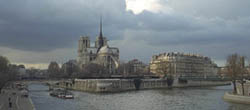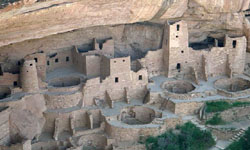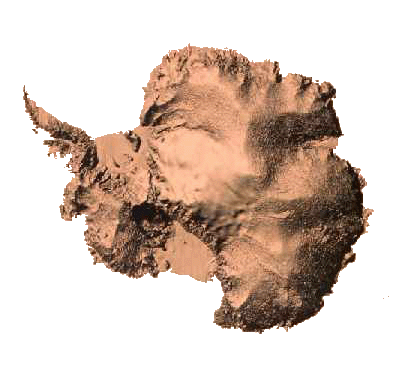Antarctica

A Complete Guide to its History, People, Cities and Culture



Photo Credits, top to bottom: Delphia, the city where visitors first arrive on the continent; Semei, on the northeast coast of Antarctica, known for its seafood, computer language industry and telekinesis experiments; Balloonists pass above the green hills surrounding Delphia, on their way back to the city; Detail of the ruins at Mimosa, where the most famous battle in Antarctican history occurred in 1403 B.C.
BUY MY BOOKS | HOME | FICTION | ESSAYS | ON-LINE DIARY | MARGINALIA | GALLERY | INTERACTIVE FEATURES | FAQ | SEARCH ENGINE | LINKS | CONTACT
www.ralphrobertmoore.com
the official website for the writings of
ralph robert moore

Cuisine
Antarcticans love to eat.
Their amazing metabolism allows Antarcticans to eat great quantities of food without going above their ideal weight, although most meals are generally the size and diversity of what an American, for example, might eat on Thanksgiving.
By far the most popular food in Antarctica is seafood, and in particular shellfish. Because nearly all the population lives near the shores, and the interior itself is saturated with lakes, rivers and streams, most seafood and fresh water fish is simply caught an hour or so before dinner, and kept in a tin bucket of cold, emerald water until it is time for it to be cooked (other than clams, oysters and caviar, Antarcticans do not eat their seafood raw). Antarctica's waters abound with food, most of which will be familiar to non-natives: tuna, swordfish, halibut, snapper, flounder, sand dabs and sea bass are the most popular ocean fish, and trout and salmon the most popular from the rivers and streams. The only fish known to be unique to Antarctica is the salt water Wem, which grows up to a foot and a half in length, has no scales, and is boneless (its head is encased in cartilage). Wem, when cooked, changes from a pearly grey to pure white, and becomes slightly springy. It's extremely popular because of its ease of preparation, and its ability to absorb the flavors of the foods with which it is cooked. There are a large variety of shrimp, some of which grow nearly a foot in length, as well as several species of lobster, including the Antarctican blue lobster, with large fore claws and side legs much thicker and more meat-filled than its Atlantic cousin. Crab and mussels are found primarily along the northern shores, and are among the few seafoods an Antarctican (those Antarcticans living other than in the north) purchases rather than catches.
Among land animals, the most popular meat is pork. Antarcticans generally eat it in one form or another at least once a day, either as chops, roasts, sausages, stuffings, marinated slices or in stews (there are hundreds of different pork stew recipes). It is also, of course, frequently smoked for hams and bacon. Also very popular is beef, although only certain cuts: Antarcticans eat rib eye and porterhouse steaks, filet mignon, rib roasts and are fond of sliced roast beef, served in hot and cold sandwiches, as well as a chuck pot roast, chula, which is covered with grated horseradish briefly marinated in vinegar, then cooked with beef stock and root vegetables, but the rest of the cow is generally used for ground beef (ground beef, often mixed with ground veal and pork, is popular in a variety of wrapped dishes, as well as used to fashion meat balls and a type of meatloaf made with carrots; in the late 1940's, the hamburger was first introduced to Antarctica by explorers returning home, and has since become one of the nation's most popular foods, along with hot dogs, which were introduced a decade earlier). Veal and lamb are also popular, as are a variety of game.
Among fowl, the most popular is duck. A favorite lunchtime meal, sold in the plazas of most Antarctican cities, is a "flat and bent", meaning a duck breast seared in a skillet until it is just done, then thinly sliced and placed on a bed of crisp greens in a wide, chewy hard roll, moistened with several sauces, and served with a roasted duck leg on the side. After duck, most Antarcticans prefer goose, then chicken, then turkey (turkey has not been domesticated in Antarctica. It is still wild).
The most popular drink in Antarctica is plain ice water. Whenever an Antarctican sits, there seems always to be a glass at his or her side. Sparkling water can be obtained from Antarctica's many mineral wells, and some people drink it, but it is not as popular as it is elsewhere in the world. Fruit juices are popular, particularly citrus and melon varieties. After dinner, an Antarctican will often have a "dessert drink", which in Antarctica refers to an ice cream soda, a milkshake, or a particularly flavorful local drink made with chilled cream, coffee and sugar known as a 'starter', although it's unclear what it starts, since it comes at the end of the meal. Other than in these forms, and added to coffee, milk is generally used in Antarctica only for marinating and cooking-- it is not served as a drink. There are no carbonated sodas, such as colas or ginger ales, in Antarctica. They apparently never caught on.
Among alcoholic drinks, beer (known as spatendunk), is the most popular. Antarcticans prefer their beers to be dark and strong-flavored, with slightly more bitterness than most Westerners are accustomed to, and served ice cold. There are a number of commercial breweries throughout the nation, but many Antarcticans prepare their own. A variety of alcoholic flavorings made from fermented roots are frequently used with hot coffee and cream, and vodka mixed with different fruit juices is also popular. Wine, when it is served, is almost always red. White wine is made, but is used primarily for cooking, and even then, not very often. There are no dessert wines in Antarctica. Whiskey is popular with about ten percent of Antarcticans. It is usually served very cold, often with a small amount of fermented root flavorings added, and a pinch of sugar. As a part of their unusual metabolism, Antarcticans feel the cheerful effects of alcohol, but are apparently not subject to the sometimes negative effects (anger, conversation monopolization) which can occur.
The most popular condiment in Antarctica is mustard (there is said to be over 400 varieties available), followed by mayonnaise and ketchup. Relishes tend to be strong-flavored, and not sweet: the most common are a garlicky blend of chopped-up olives; a cooked mixture of julienned red and green bell peppers and chilies; and a cooked, cooled, minced mushroom spread.
It has been said that it is impossible to get a bad meal in an Antarctican restaurant. Even the smallest establishment serves extraordinary food; the most famous places prepare meals that are remembered decades later. There is not enough space here to survey all the stellar Antarctican establishments; suffice it to say that the typical visit to an Antarctican restaurant involves being led from the sunlight of the sidewalk to a cool, dark private roomette where an amazing variety of edibles are offered and discussed, hung by the waiter's hands upside down, and still kicking, or cradled across palms, still tail-flicking wet from the tanks, or placed on a white linen napkin in the middle of the table, green and yellow, still crisp and sun-warmed, clumps of chocolate earth still belling along the hairy striped roots.
Antarcticans are excellent cooks, no doubt because of the importance they place on physical pleasures. Most Antarcticans cook at home using an oyster (not to be confused with the seafood-- the name appears to be a coincidence).
An oyster is a large, square skillet made of cast iron, the left two thirds of which is a flat cooking surface with a slight border, and the right third of which is comprised of three equal-sized, square cooking wells.
The oyster is used to cook most Antarctican meals (the typical Antarctican household also has a cast iron stove, used for roasting larger cuts of meat, and for certain baked goods), and is remarkably versatile in its uses.
The flat portion of the oyster is used for sautéing, and for an Antarctican cooking technique known as "splash steaming", whereby the cook, armed with a bottle filled with water, stock or other liquid in her left hand, and a wide spatula in her right, cooks foods at an extremely high heat by continuously flipping the food into the air, splashing the bottled liquid on the surface to produce a steam the food is seared and moistened with, then flattening the food momentarily against the hot flat cooking surface before flipping it into the air again and resteaming it. Splash steaming is used with some vegetables and fruits, and occasionally with seafood. It tends to produce food full of flavor, and incredibly moist.
The three cooking wells on the right of the oyster are used for steaming, poaching, boiling, stewing, braising, deep-frying, baking, charbroiling, creating stocks, and reducing and thickening sauces.
Antarcticans normally eat twice a day, once in late morning, and once at late evening.
Antarcticans divide meats into two categories: "day" meats and "night" meats. Day meats are fowl and seafood; night meats are pork, beef, veal, lamb and game other than fowl. If a night meat is smoked or brined, such as a ham, it is considered a day meat (If a day meat is smoked or brined, such as smoked salmon, it is still considered to be a day meat).
Virtually all meals include at least two meats, and a variety of vegetables, fruits and grains. It is a tradition that one of the meats is a day meat, and one is a night meat (since both types of meat are eaten during the day meal, and both types are eaten during the night meal, it is not known why Antarcticans categorize meats the way they do).
While a meal is being prepared, Antarcticans typically sauté in fresh butter, on a corner of the cooking surface, a small mound of wild mushrooms, onto which is drizzled various sauces. These mushrooms are then eaten by the cook and any guests while the meal is cooked.
Once a meal is ready to be served, all the foods are removed from the wells, and a thick batter of ground wheat and mushroom poured into each well to a depth of about two inches. This batter, once it has absorbed all the flavors left in each well, and dried somewhat, is then pulled out and served with the meal much as one would biscuits. Similarly, once all the foods are removed from the flat cooking surface of the oyster, a thin layer of batter is poured across the hot surface to soak up all the juices of the foods cooked on the surface, then adroitly flipped, allowed to cook momentarily on the other side, then sliced up into large squares which can be eaten plain (they are delicious!) or used to roll up the foods served.
print this article